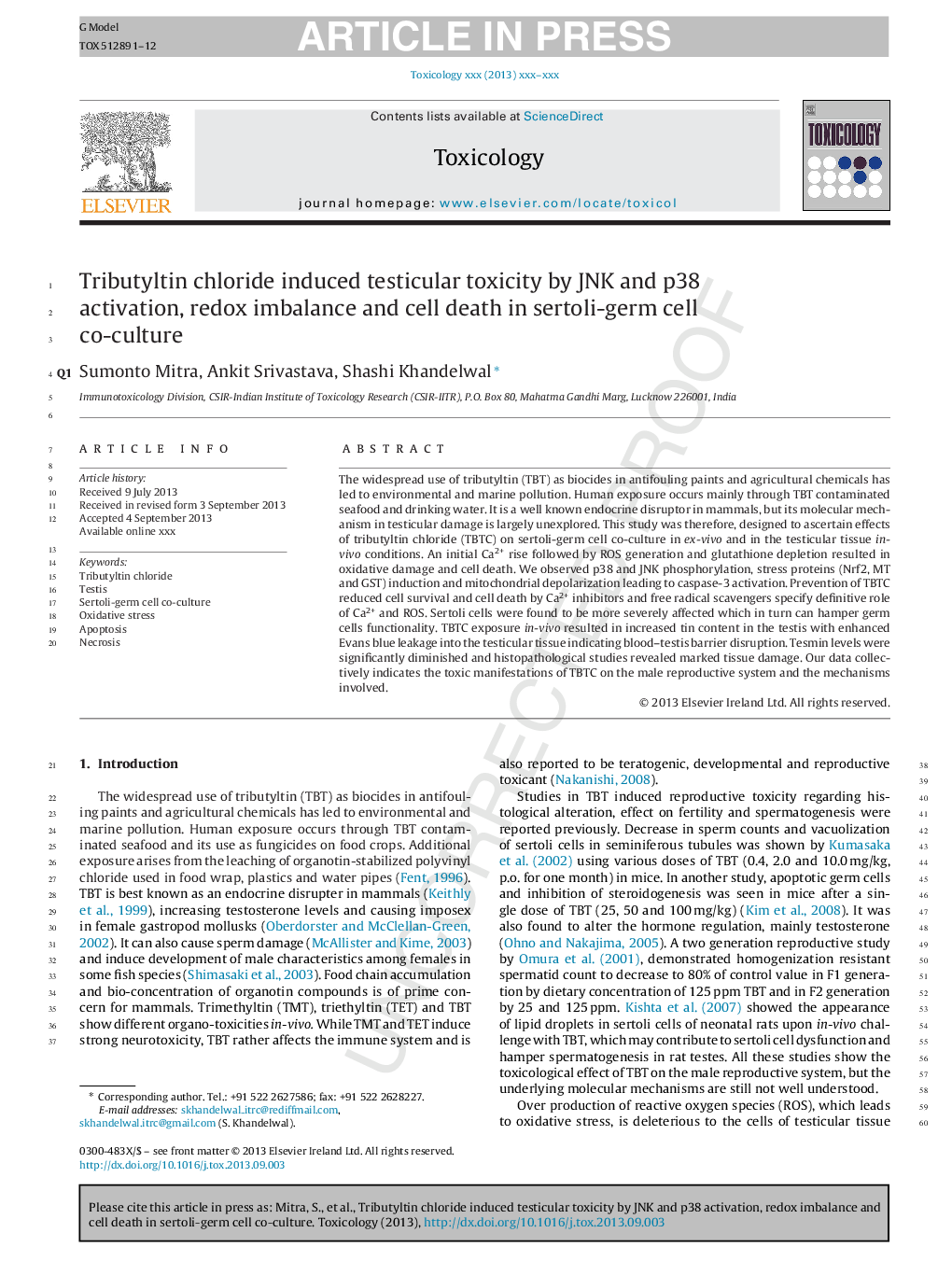| کد مقاله | کد نشریه | سال انتشار | مقاله انگلیسی | نسخه تمام متن |
|---|---|---|---|---|
| 5859309 | 1132469 | 2013 | 12 صفحه PDF | دانلود رایگان |
عنوان انگلیسی مقاله ISI
Tributyltin chloride induced testicular toxicity by JNK and p38 activation, redox imbalance and cell death in sertoli-germ cell co-culture
دانلود مقاله + سفارش ترجمه
دانلود مقاله ISI انگلیسی
رایگان برای ایرانیان
کلمات کلیدی
موضوعات مرتبط
علوم زیستی و بیوفناوری
علوم محیط زیست
بهداشت، سم شناسی و جهش زایی
پیش نمایش صفحه اول مقاله

چکیده انگلیسی
The widespread use of tributyltin (TBT) as biocides in antifouling paints and agricultural chemicals has led to environmental and marine pollution. Human exposure occurs mainly through TBT contaminated seafood and drinking water. It is a well known endocrine disruptor in mammals, but its molecular mechanism in testicular damage is largely unexplored. This study was therefore, designed to ascertain effects of tributyltin chloride (TBTC) on sertoli-germ cell co-culture in ex-vivo and in the testicular tissue in-vivo conditions. An initial Ca2+ rise followed by ROS generation and glutathione depletion resulted in oxidative damage and cell death. We observed p38 and JNK phosphorylation, stress proteins (Nrf2, MT and GST) induction and mitochondrial depolarization leading to caspase-3 activation. Prevention of TBTC reduced cell survival and cell death by Ca2+ inhibitors and free radical scavengers specify definitive role of Ca2+ and ROS. Sertoli cells were found to be more severely affected which in turn can hamper germ cells functionality. TBTC exposure in-vivo resulted in increased tin content in the testis with enhanced Evans blue leakage into the testicular tissue indicating blood-testis barrier disruption. Tesmin levels were significantly diminished and histopathological studies revealed marked tissue damage. Our data collectively indicates the toxic manifestations of TBTC on the male reproductive system and the mechanisms involved.
ناشر
Database: Elsevier - ScienceDirect (ساینس دایرکت)
Journal: Toxicology - Volume 314, Issue 1, 6 December 2013, Pages 39-50
Journal: Toxicology - Volume 314, Issue 1, 6 December 2013, Pages 39-50
نویسندگان
Sumonto Mitra, Ankit Srivastava, Shashi Khandelwal,